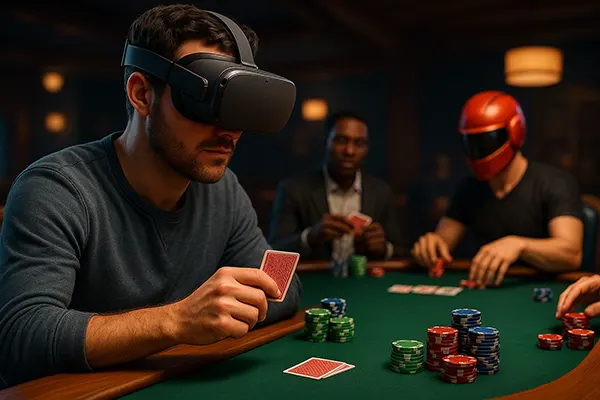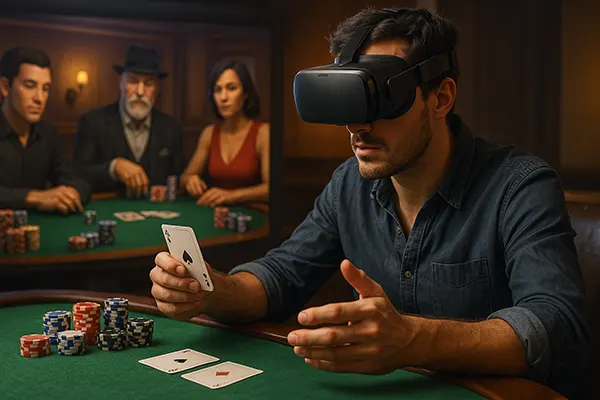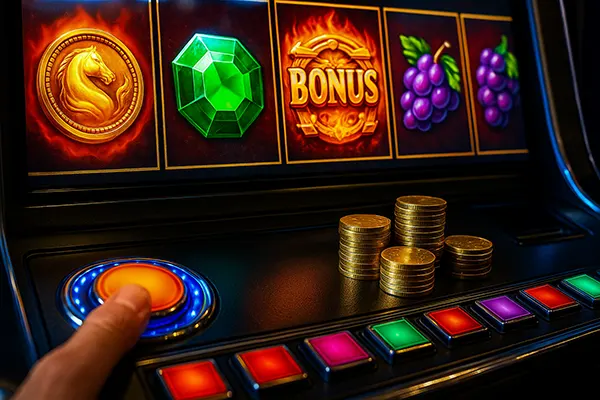
How Players Are Adapting to Poker Games in Virtual Reality
Virtual reality (VR) has gradually emerged as a transformative force in the poker world. As of February 2025, VR poker has evolved from a novelty into a distinctive mode of gameplay, attracting both seasoned professionals and curious newcomers. By replicating the nuances of in-person poker, this format challenges traditional approaches and demands a new set of skills from players. Let’s explore how the poker community is adjusting to this digital frontier.
VR Poker as a New Gaming Environment
The earliest VR poker titles, such as PokerStars VR and Poker Club, laid the foundation for immersive card play back in the late 2010s. In 2025, the experience has matured significantly. With better headsets and improved motion tracking, today’s VR poker provides a highly convincing simulation of live table dynamics. Players now engage with more than just cards—they interact with virtual chips, body language, and voice chat.
This immersion reintroduces the social layers of the game that had been lost in standard online poker rooms. The sensation of sitting at a lifelike table, observing avatars, and engaging in real-time actions adds psychological depth to gameplay. Tells, bluffs, and reactions regain importance, encouraging players to refine not just their strategy, but their virtual presence.
Adapting to this environment requires more than learning a new interface. It demands spatial awareness, multitasking, and emotional control. Players used to fast-click interfaces now need to consider their body language, verbal responses, and timing—all elements once reserved for physical casinos.
Social Interaction and Its Impact
One of the most notable shifts in VR poker is the return of non-verbal cues. Avatars can mimic real gestures, allowing players to watch for behavioural patterns, hesitation, or confidence signals. Unlike text-based chats or 2D environments, here every movement might reveal something useful—or mislead deliberately.
Bluffing in VR has also evolved. Players can experiment with tone of voice, virtual accessories, or even deliberately fidgeting avatars to manipulate perception. This new toolkit reintroduces psychological warfare that online poker had minimised.
The social atmosphere also increases immersion, creating longer and more engaging sessions. Some users report improved focus due to the reduction in external distractions, while others find the constant presence of avatars mentally taxing. Still, for many, the payoff lies in the authenticity of the interactions.
Technological Barriers and Opportunities
Despite the growing appeal, VR poker still faces entry barriers. High-quality headsets, such as the Meta Quest 3 or HTC Vive XR Elite, can cost hundreds of pounds. Not all players are willing—or able—to invest in such equipment for casual use. Moreover, long sessions in VR require physical comfort, proper ventilation, and good posture to avoid fatigue or motion sickness.
Yet, the upside is clear. Developers are already exploring cross-platform integration, allowing users without headsets to spectate or participate in simplified ways. Hardware manufacturers are also working on lighter, more affordable gear, which could open VR poker to a broader market within a few years.
Additionally, innovations in hand tracking and haptics may further enhance realism. The ability to ‘feel’ virtual chips or shuffle cards with natural gestures could bridge the final gaps between simulation and reality, making VR poker a more complete and accessible experience.
The Path to Wider Adoption
The growth of VR poker depends on striking a balance between technology and accessibility. While the hardware will likely become more affordable, user experience must remain intuitive. Streamlined interfaces, reliable connectivity, and accessible tutorials will be crucial in onboarding new players without overwhelming them.
Community-building efforts, such as VR tournaments or ranked ladders, can also incentivise more sustained engagement. As players become more comfortable with the environment, many are likely to treat VR poker as a legitimate competitive format rather than a novelty.
Ultimately, while not a replacement for traditional or online poker, VR poker offers an alternative that combines social realism with digital convenience. For now, it’s a niche with great promise—and those adapting early may have an edge in this emerging arena.

The Psychology of VR Gameplay
Playing in VR alters psychological dynamics. Physical presence, or at least its simulation, raises the emotional stakes. Players are less likely to behave erratically or aggressively when faced with human-like avatars. This softens the impersonal edge of online play and reintroduces the need for emotional intelligence.
Reading opponents in VR is a new skillset. While real tells are absent, avatars still provide behavioural data—timing, gestures, vocal inflection. Players who previously relied on HUD stats must now pay attention to subtler, more analogue signals.
Furthermore, the sense of embodiment changes how players perceive risk and loss. Some report that handling virtual chips with their hands deepens their sense of investment, making each decision more tactile and emotionally resonant. In VR, even folding can feel physical.
Mental Focus and Adaptation
VR gameplay demands a unique form of concentration. Distractions are minimised by the headset environment, but cognitive load increases due to the need to interpret social signals, control one’s avatar, and manage the actual game—all simultaneously.
This can lead to greater immersion but also mental fatigue. Players new to the format often report needing shorter sessions until their brain adjusts to the multitasking. Over time, however, many develop stronger attention spans and more measured playstyles.
As familiarity grows, so does confidence. With practice, players stop being overwhelmed by the sensory input and begin to use it strategically. Much like live poker, those who learn to control both their own image and their reaction to others will thrive.





